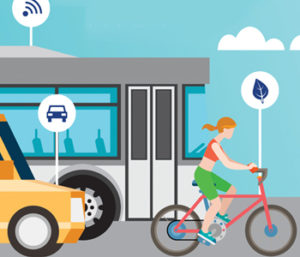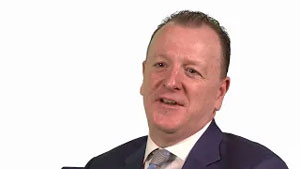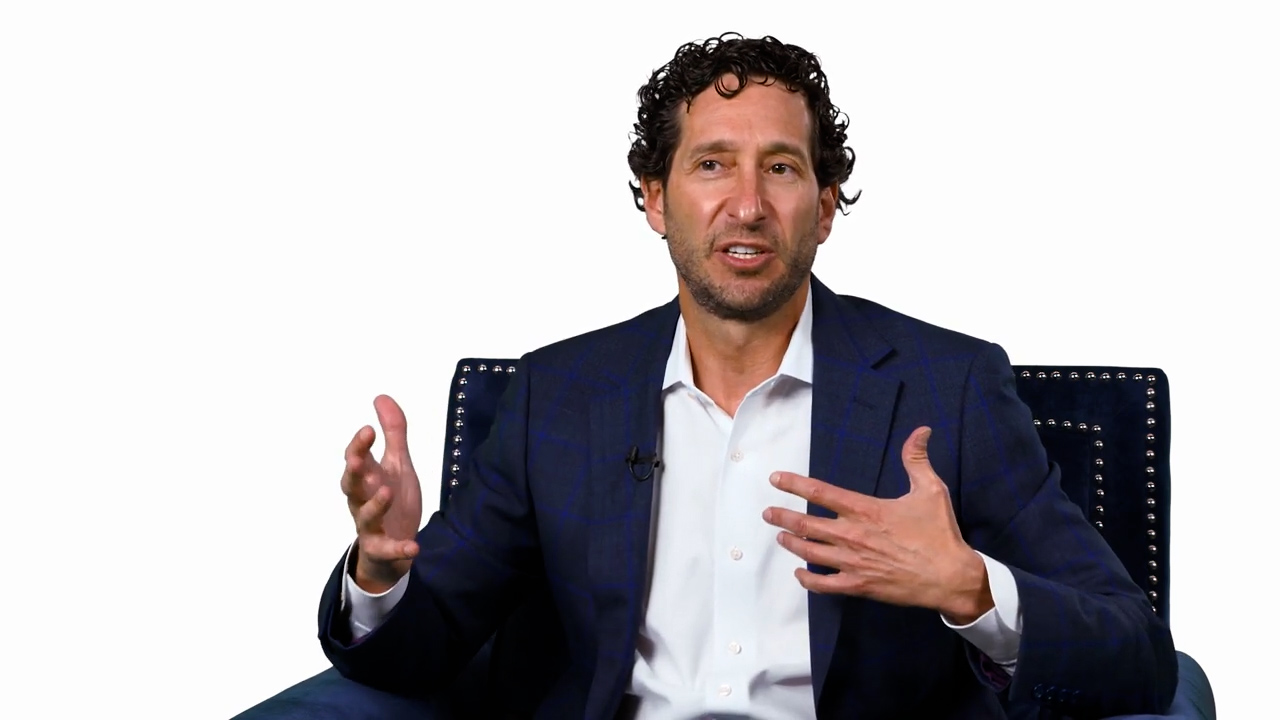
“In Southern Nevada, the RTC (Regional Transportation Commission) has public transportation and traffic technology under its umbrella, and it’s the metropolitan planning organization. We’ve got regional planning, transit and transportation and we’re the agency doing planning and funding,” explained Tina Quigley, general manager of RTC Southern Nevada.
“We are a comprehensive, integrated agency,” added Lee Gibson, executive director of RTC Washoe. “We start with the long-range plan viewpoint and, from that perspective, we develop our projects and carry them through construction. And, we work very closely with Nevada Department of Transportation (NDOT).”
“NDOT is primarily responsible for the statewide transportation system, working through the planning process, so we maintain eligibility for federal funds on these projects. Part of that is new capacity improvements, new interchanges, bridges, lane widening and maintaining what we have – preservation programs,” said Rudy Malfabon, director, Nevada Department of Transportation.
Working together, both RTCs and NDOT develop the road map of transportation for Nevada and then implement the plans for their respective regions.
Planning for the Future
“The future of transportation is going to increasingly capitalize on the integration of all the roles we serve in the community,” said Quigley.
Nevadans can expect more smart transportation infrastructure, such as roads with sensors that communicate with cars while collecting data like vehicle counts and drive times. This information can provide real-time data that helps regional planners make more informed decisions.
What Quigley refers to as a “symbiotic co-dependency” of all three major functions of the RTCs – roadway planning and funding, transit operations, and transit and transportation technology –sounds more like science fiction.
Getting to a place where transportation and technology go hand-in-hand is a series of incremental baby steps. The ability to use technology to capture data and perform analytics will allow regional transportation planners to operate more efficiently, but the pieces must be put into place first.
So how does that happen?
“We’re talking about the future,” Quigley reminded. “But, a great example is the ability of our traffic lights and cars to communicate. It’s actually something we are already developing.”
By allowing sensors in traffic lights to communicate with sensors in cars, wait times at red lights can be reduced and traffic can flow more smoothly. The more cars traveling through a traffic light cycle, the more efficient the technology is at allowing traffic to flow and the greater the capacity the community has just been given, Quigley said.
That’s without building another road or constructing another intersection. And, this example benefits more than just efficiency.
“By making existing lights and intersections more efficient, transportation planners can save taxpayers hundreds of millions of dollars by not having to buy additional right-of-way, not having to buy additional asphalt, “ said Quigley.
That future isn’t quite here yet, but it’s coming. Already in Southern Nevada, a partnership between Audi and RTC allows cars and traffic signals to communicate. Newer Audis count down the seconds before traffic lights turn green.
Some light cycles can take 90 seconds to go back to green, plenty of time for a driver to become distracted. The new Audi, by communicating with traffic light sensors, will beep four seconds before the light changes, reminding the driver to pay attention. Four seconds may not sound like much, and the idea of individual drivers moving through intersections seconds faster might not either, but every disengaged driver is a wasted opportunity for more cars to move through a single traffic light cycle.
When those same sensors collect data on the number of cars passing through each traffic light cycle, and where inefficiencies occur, sequencing the lights can be optimized.
“I think technology’s first and major role is going to be in safety,” said Gibson. “It’s going to provide us the opportunity to manage intersections more safely. As we move toward an autonomous future, clearly establishing the ability for vehicles to change to the infrastructure is going to be a critical piece for us.”
Two current RTC Washoe projects have a specific technological focus. The organization is working with the University of Nevada, Reno to collect data about the environment, as vehicles move through, so better computer systems can be designed, developed and implemented to enhance safety. This will be especially helpful in high activity corridors where there’s heavy traffic flow.
RTC Washoe is also working with the university to establish communications between traffic signals and vehicles.
The more data regional planners can gather from smart systems about infrastructure and efficiency of traffic signals, the more capacity they’ll be able to get from existing infrastructure before needing to invest in more.
Quigley expects the next steps in technology will include cars functioning as sensors that share information with other cars and cars and infrastructure operating together in an overall arterial network of moving vehicles.
Not all transportation technology is waiting for the future. RTC Southern Nevada partnered with an Israeli startup, Waycare, to develop an algorithm capable of predicting where accidents on freeways will occur. The technology is in use in two test corridors along U.S. 95 West of I-15 and I-15 South of Charleston Boulevard.
“So far it’s a success,” Quigley said. The technology alerts authorities to freeway accidents even before the emergency call is made, and allows accidents to be cleared 12 minutes faster than before. Its important technology particularly because unexpected lane closures on freeways due to accidents often cause secondary accidents.
Safe, Economical, Sustainable
Smart roads and smart cars aside, safety is the number one concern. From moving more cars through an intersection in one cycle – and making it less likely for drivers to run the red – to widening highways where traffic is increasing, RTCs on both ends of the state work to improve safety. Safety is the goal driving the widening of highways throughout Washoe County, including a planned project for the Spaghetti Bowl, Reno’s Interstate 80, 580 and U.S. 395 interchange. Following closely behind safety is economic development.
“We’ve worked very closely over the years with EDAWN (Economic Development Authority of Western Nevada) to make sure our transportation system is going to support the new economy of Northern Nevada,” said Gibson. “We want to provide projects that are affordable to operate and affordable to own and provide positive benefit for the physical and natural environment.”
The recently completed SouthEast Connector that ties south Reno to Sparks provides an alternate route to I-580. Also built into that project were a number of flood management components through the wetlands areas in south Reno, and various hazardous materials issues were solved as well.
“We always want to be at the forefront of sustainability across a wide spectrum of economic, social and environmental considerations,” said Gibson.
Transit Efforts and Community Engagement
Moving residents and visitors through the state takes concentrated planning as well as some predicting of the future. Transportation planning doesn’t have an algorithm doing the work and both of the state RTC agencies and NDOT need community feedback.
“It’s really a collaborative process with a lot of agencies involved as well as the public. We have a very public process, a transparent process for public input on our plans,” said Malfabon.
In Southern Nevada, there’s a community conversation in progress regarding long-range transit plans. The RTC is developing On Board, a comprehensive transit plan for a growing Southern Nevada. The 20 year plan looks to 2040 when the area is expected to have grown by approximately 700,000 people, with nearly 3 million residents living in the region. On Board will identify how enhancements to the current bus system, new high capacity transit services and emerging transit technologies can improve mobility and accessibility for residents and visitors across the Las Vegas Valley
“It’s an extensive community outreach to talk with the public, elected officials, business leaders, transit riders and the community as a whole,” said Quigley. “What are our priorities and land use plans for transit routes for the next 20 years? Where do we need additional routes? Where do we need to enhance existing routes with more frequency or longer hours of service? Where do we need to prepare for high capacity transit?”
Among Southern Nevada corridors included in the conversation are Maryland Parkway, between the airport and the University of Nevada, Las Vegas, the Boulevard Mall and Sunrise medical district and downtown.
Recommendations from the community will be taken into account in determining what transit solutions will improve traffic on the busy corridor, such as enhancing current bus service, adding bus rapid transit or developing urban light rail European tram-type concepts.
It’s not easy holding a conversation with an entire community. The current public outreach is the largest RTC Southern Nevada has ever attempted. More than 17,000 community members have completed online surveys expressing thoughts on priorities for transit and transportation planning.
Community engagement doesn’t end with surveys. RTC employees attend community events, arrange formal meetings with business owners and have even outfitted a retired city bus they can take to events. Anyone interested can come onboard the bus to view and discuss transportation plans and offer feedback.
RTC Washoe also has a robust and comprehensive, award-winning public outreach program.
“Public participation and input is the foundation for the work we do at the RTC,” said Gibson. “Our community knows we are here to listen and they are a critical part of the projects and programs we develop and deliver in the region.”
Funding
On both ends of the state, voters have approved tying the motor vehicle fuel tax to inflation. Before that legislation passed, the tax had been stagnant for over 20 years, while the cost of labor and materials increased significantly.
The motor vehicle fuel tax allows communities to maintain roads. Funding for transit is a different story, and finding increased funding for technology is another challenge.
Gibson and Quigley agree that they need the federal government to invest in technology and transit. Both areas will be a challenge moving forward to keep up with the growth of metropolitan areas.
Funding for projects comes from a broad number of sources, explained Gibson, including local and federal funding sources. Some 35 percent of RTC Washoe’s budget comes from the federal government transit highway improvements in the region. Many federal programs have been converted to discretionary programs, Gibson said, noting the agency has been successful in the past in receiving those discretionary grants.
There’s also the motor vehicle fuel tax index which allows incremental annual fuel tax increases to account for inflation.
“That preserves our ability to construct projects because a set fixed rate that doesn’t go up doesn’t maintain our buying power in the construction market. Right now that’s critical because, as we go through a growth phase, commodity prices are going up, labor prices are going up, construction is more expensive. These fuel tax adjustments allow us to keep up with those costs,” said Gibson. Fuel tax indexing in Washoe County was implemented in 2010, following a two-year process after the 2008 vote.
At the statewide level, NDOT uses primarily federal fuel tax revenue as well as the state equivalent of the gasoline and diesel fuel taxes. The agency also applies for federal grants to fund projects.
“The federal trend is to have more local and state funding and less reliance on federal funding for a lot of these grant programs. Roughly 20 percent [of our funding is] federal and 80 percent is from state and local revenue sources for transportation projects,” said Malfabon.
Teamwork
None of the transportation commissions work completely autonomously. Collaborative projects allow agencies to identify projects and expand their reach. For example, because they’re the planning agency for the area, RTC Washoe works with NDOT to identify and select projects for funding and, where appropriate, manage funds.
“Several years ago we worked very closely with NDOT to widen the freeway from Villanova Drive to Mill Street and entered into a joint agreement with NDOT. RTC funds were used, NDOT funds were used and the freeway was reconstructed and widened,” said Gibson. RTC also works with NDOT when putting together multi-county plans.
“We are legally constrained to Washoe County but will work very closely with (NDOT), for example, on how to widen I-80 going east, and coordinating projects like widening the U.S. 395 corridor or the Spaghetti Bowl.”
RTC Washoe and RTC Southern Nevada collaborate on large scale policy questions that impact metropolitan areas at state and federal level. “For example, we cooperate with them in the legislature as a way to ensure both RTCs are legally able to do what we need to do to deliver projects and services to our respective counties,” said Gibson.
Smart Communities
Another area of collaboration is, according to Quigley, the concept of smart communities. She added, “One of the greatest gifts we can give the next generation of leaders and those interested in growing the region is to erase jurisdictional boundaries and have a smart Nevada.”
By working as a region toward a smart system, RTC and collaborative partners could decide on the kind of data governance it should have, the type of shared platforms, shared initiatives and data collection, rather than each agency collecting its own data and using it in a proprietary way.
The next step is to determine what governance would look like. To figure that out, for the last year, a group including all jurisdictions and Southern Nevada Water Authority, Las Vegas Global Economic Alliance, fire and police and NDOT have convened to have that exact conversation.
“[In June] we reached the point where every single one of those jurisdictions has agreed to a shared vision of what we want smart communities to be,” said Quigley. “Now we’ll start to get into the really tricky part: what does data governance look like, what are common use platforms, what kind of data do we want to share and aggregate. That will be more challenging but we’re excited we’ve come together collaboratively to do that.”
“I always tell people it’s really easy to be a smart city, that means you have one mayor, one city manager, one IT director and you can pretty much control and move forward,” Quigley added. “Trying to get a series of jurisdictions with different leaders to agree is a lot harder but we’ve done it, philosophically we’ve agreed this is what we want to do.”










